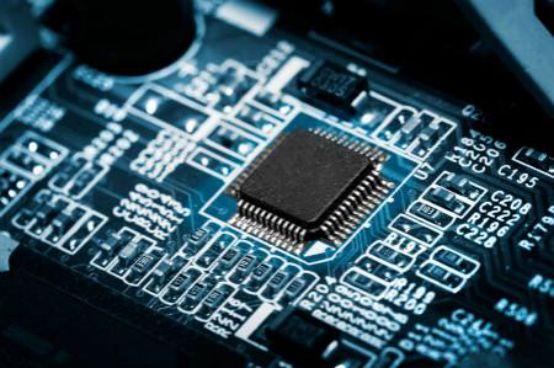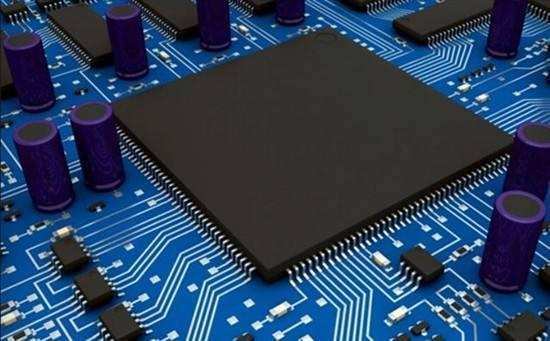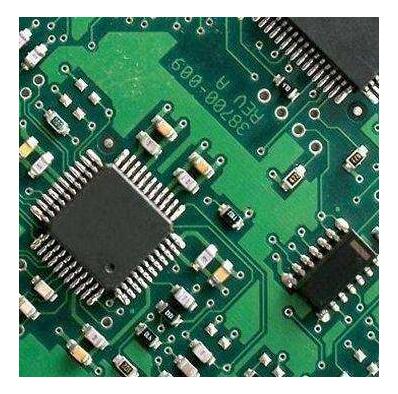
Radio frequency, high speed digital circuit: forbid acute Angle, try to avoid right Angle
If it is a radio-frequency line, if it is a right Angle at the corner, there will be discontinuity, and discontinuity will easily lead to the generation of higher order mode, which has an impact on both radiation and conduction properties. If the RF signal line is at a right Angle, the effective line width at the corner will increase, resulting in discontinuous impedance and signal reflection. To reduce discontinuity, there are two ways to treat corners: cut corners and round corners. The radius of the arc Angle should be large enough, generally speaking, to ensure that: R> 3W.
Line at acute angles and right angles
We prohibit the occurrence of acute Angle wiring. Right Angle wiring is generally avoided in PCB wiring, and it has almost become one of the standards to measure the quality of wiring. Then how much impact will right Angle wiring have on signal transmission?
In principle, acute Angle, right Angle line will make the transmission line width changes, resulting in impedance discontinuity.
Changes in linewidth result in changes in impedance
When the equivalent width of the line changes, the signal will be reflected.
If the line width changes when we walk the wire, the line impedance will change.

Microstrip line:
It consists of a strip wire and the ground plane, in the middle of the dielectric. If the dielectric's permittivity, the width of the line, and its distance from the ground plane are controllable, its characteristic impedance is also controllable, and its accuracy will be within ± 5%.
Ribbon line:
A strip is a strip of copper in the middle of a dielectric between two conducting planes. If the thickness and width of the line, the dielectric constant of the medium, and the distance between the ground planes of the two layers are controllable, the characteristic impedance of the line is also controllable, and the accuracy is within 10%.
Acute Angle is worst, right Angle is second, obtuse Angle is second, rounded Angle is second, straight line is best.
When the driver transmits a signal into the transmission line, the amplitude of the signal depends on the voltage, the internal resistance of the buffer, and the impedance of the transmission line. The initial voltage seen by the driver depends on the partial voltage of the internal resistance and line impedance.
Reflection coefficient
-1≤ρ≤1
No reflection occurs when ρ=0
Full positive reflection occurs when ρ=1(Z 2 =∞, open circuit)
All negative reflection occurs when ρ=-1(Z 2 =0, short circuit)
The initial voltage, is the source voltage Vs (2V) through Zs (25 ohm) and the transmission line impedance (50 ohm) partial voltage.
Vinitial = 1.33 V
The subsequent reflectance was calculated according to the reflection coefficient formula
The reflectivity of the source is calculated as -0.33 based on the source impedance (25 ohm) and transmission line impedance (50 ohm) according to the reflection coefficient formula.
The reflectivity of the terminal is calculated as 1 according to the terminal impedance (infinity) and the transmission line impedance (50 ohm) according to the reflection coefficient formula;
We get this by superimposing the original pulse waveform, based on the amplitude and delay of each reflection, and that's why impedance mismatches cause poor signal integrity.
The impedance has to change due to the presence of connections, device pins, changes in the width of the wire, bends in the wire, and holes. So the reflex is inevitable.
Other causes than reflexes:
The effect of right-angle routing on signal is mainly reflected in three aspects
First, the corner can be equivalent to the capacitive load on the transmission line, slowing down the rise time;
Second, impedance discontinuity will cause signal reflection;
Three, is the EMI produced by the right Angle tip.

Fourth, there is another saying: acute Angle will cause corrosion residue in the production process, which is not easy to process. It should not be difficult for the current PCB processing technology, so it should not be used as a reason.
The parasitic capacitance due to the right Angle of a transmission line can be calculated by the following empirical formula:
C=61W(Er)1/2/Z0
In the above equation, C refers to the equivalent capacitance of the corner in pF, W refers to the width of the wire in inch, r refers to the dielectric constant of the medium, and Z0 is the characteristic impedance of the transmission line.
For example, for a 4Mils 50 ohm transmission line (εr is 4.3), the capacitance of a right Angle is approximately 0.0101pF, and the resulting rise time change can be estimated:
T10-90%=2.2*C*Z0/2 =2.2* 0.0101*50/2 = 0.556ps
It can be seen from the calculation that the capacitance effect caused by right-angle routing is extremely small.
As the line width of the right-angled line increases, the impedance here will decrease, and certain signal reflection will occur. We can calculate the equivalent impedance after the line width increases according to the impedance calculation formula mentioned in the section of transmission line, and then calculate the reflection coefficient according to the empirical formula: ρ=(Zs-Z0)/(Zs+Z0), the impedance change caused by the general right Angle line is between 7%-20%, so the maximum reflection coefficient is about 0.1. In the W/2 length of the transmission line impedance changes to the minimum, and then after W/2 time and restore to the normal impedance, the whole impedance change time is very short, often within 10ps, such a fast and small change for the general signal transmission is almost negligible.
Many people have such an understanding of right-angle cabling, believing that the tip is easy to emit or receive electromagnetic waves, generating EMI, which also becomes one of the reasons why many people think that right-angle cabling cannot be done. However, many practical tests have shown that right-angle routing does not produce significantly more EMI than straight-line routing. Perhaps the current instrument performance and test level limit the accuracy of the test, but at least it shows a problem that the radiation of right-angle line has been less than the measurement error of the instrument itself.
All in all, right Angle routing is not as terrible as it seems. At least in non-RF and high-speed circuit applications, any effects such as capacitance, reflection, EMI, etc. are almost not reflected in the TDR test. High-speed PCB design engineers should focus on the layout, power/ground design, wiring design, hole through, and other aspects. Of course, although the impact of right-angle wiring is not very serious, but it does not mean that we can walk right angles in the future, attention to detail is the basic quality of every excellent engineer, and, with the rapid development of digital circuits, PCB engineers processing signal frequency will continue to improve, to more than 10GHz RF design field, These little right angles can be the focus of high-speed problems.






